DID IT START LIKE THIS? YOU CUT OUT THE CHARTS FROM A MAGAZINE SO THAT YOU COULD BE UP TO DATE WITH THE LATEST HITS? This was part of a collection that came to the Ephemera Society looking for a home. (Here is material previously published in an issue of Ephemera News, February 2023 but with the opportunity to publish more material and in colour.)(and yes we published Part 2 before part 1!!)
There are several books, mainly in series, written about music charts here, in the USA where they started and in the UK. But these seem only to look at the contents of charts – relisting – song; artist; weeks at No.1 etc. But the charts and commentary on the design and use of spare space seems to be lacking.
First published charts
In the northern hemisphere top 10/20/50 charts were published in music magazines. On 4 January 1936, US magazine Billboard published its first list of the most popular music at that time. It has never stopped. In England on 14 November 1952 New Musical Express published a Top 12 singles chart. It became a Top 20 on 1 October 1955, a Top 25 for one week only in December 1955; Top 30 was published from 13 April 1956 to 26 February 1960. The first UK Top 50 chart was published in Record Retailer on 10 March 1960.
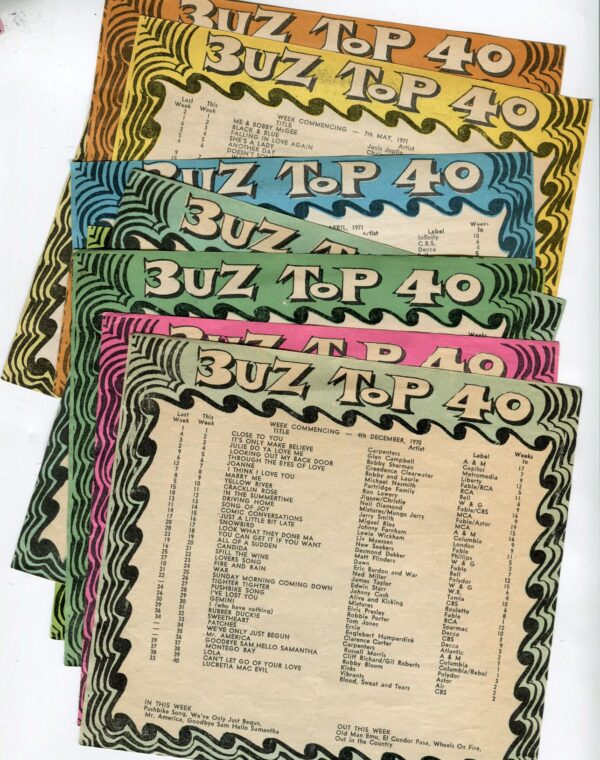
Australian scene
There was a brief, August 1955 to March 1956, bestselling album chart published in the Sydney magazine Electrical Weekly (previously Radio Electrical Weekly).
Published charts were preceded by radio programs, usually half hour hit parades; starting by playing say number 7 and only telling you which song was number 1 if you listened to the end of the program – it was a countdown. The format was copied from US radio stations, and the lists were sometimes published in newspapers as advertising for radio programs.
The first standalone published charts for singles were produced by radio stations: 2UE started in March 1958 with ‘a giveaway chart distributed via record stores’. These ‘Sound’ charts were compiled from ‘Public Survey, Record Sales, Music Sales and a national survey by Billboard’. Music lovers could pick up the free charts from record shops. Other radio stations following suit were 3XY Melbourne and 2CA Canberra.
STOP PRESS Member Ian G collects all sorts of ephemera related to radio. That of course includes these charts. Ian has started scanning his collection – and we have been able to give you this link to charts from 4GR.
These early charts listed the song title only; there was no mention of the artist. The charts were not published regularly and certainly not weekly initially.
Here we will have a quick look at the verso of charts which were used:
- to promote artists:
- to promote music events:
- Yes that chart from January 1975 is advertising the second and less successful three day concert. Wikipedia reports that:
- Sunbury ’75 ran from 25 to 27 January. The attendance was only 15,000-16,000 and the festival suffered terminal financial losses. The entry fee was $20.00 (2022:$150). A second stage was repeated for this year to cater for “alternative” acts such as dance, mime, poetry and acoustic music.[28] A rock opera, Australia – The Sunbury Symphony was commissioned.[24]British hard rock band Deep Purple went home with $60,000 (2022:$450,000), while most local groups went home empty handed. AC/DC allegedly refused to play after Deep Purple roadies provoked a fistfight with them.[16] According to Deep Purple’s lead vocalist, David Coverdale, “Apparently, a young Aussie band had jumped onstage, plugged into our gear and started playing! Well, all hell broke loose, from what I was told. Our roadies (big buggers to a man) wrestled with the young band to get them off our equipment and off the stage. Chaos and frolics ensued”.[30] Angus Young relates that there were incidents both before and after Deep Purple played.[31] Jim Keays performed his solo concept album The Boy from the Stars. Keays and his band were reportedly the only act to have been paid for their appearance, having arranged an outside sponsorship. Later in the year, Deep Purple planned a tour for 1976 and after the Australian Musicians Union “made it clear … that the proposed tour of Deep Purple could lead to considerable unrest” the UK band placed money into a fund so that artists appearing at Sunbury ’75 were paid the full musician’s rate.
- The other events are considerably more modest – plenty of local acts including the comedian Norman Gunston at 3XY expo and RockExam looks to find an audience amongst the student listeners.
The charts’ story continues in Part 2.
STOP PRESS Member Ian G collects all sorts of ephemera related to radio. That of course includes these charts. Ian has started scanning his collection – and we have been able to give you this link to charts from 4GR.
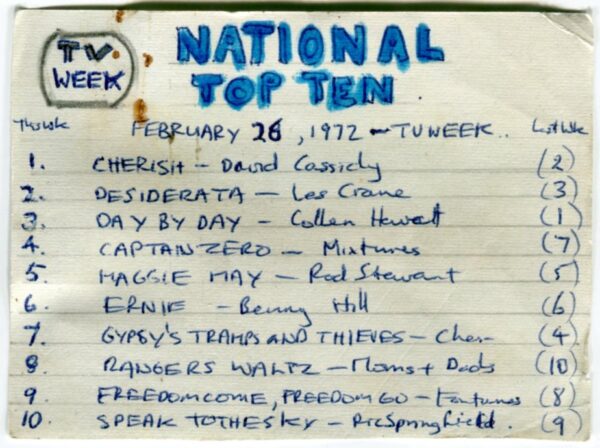
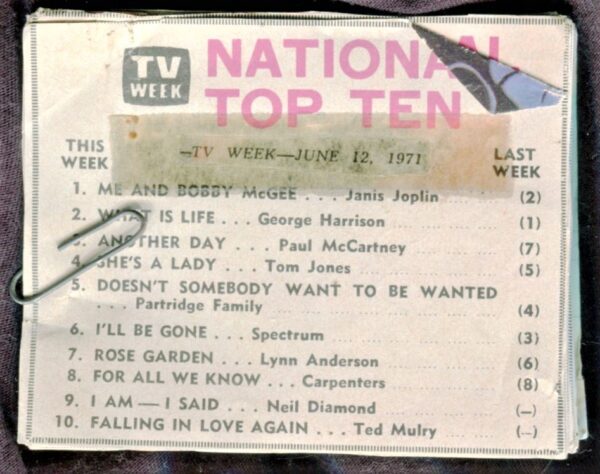
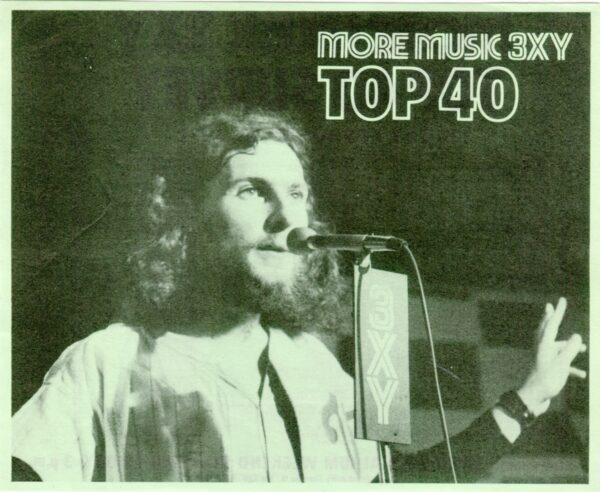
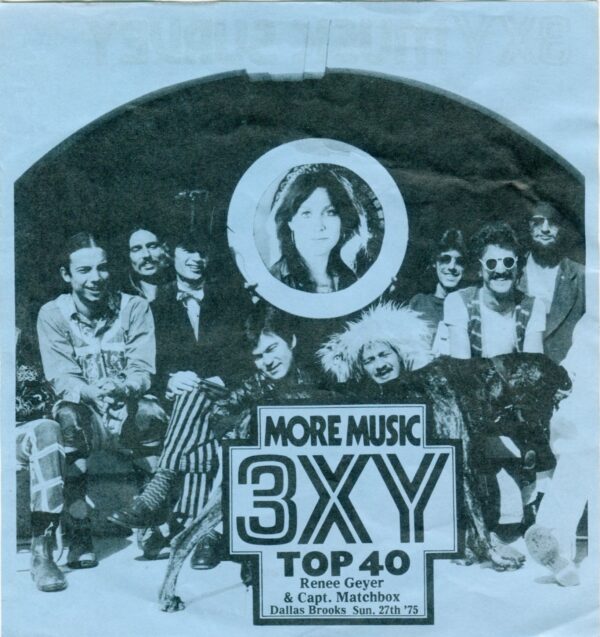
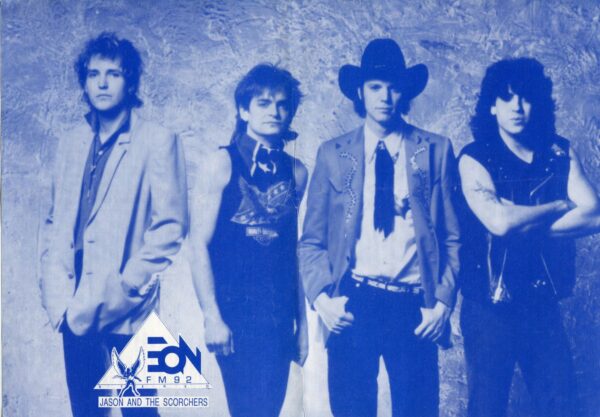
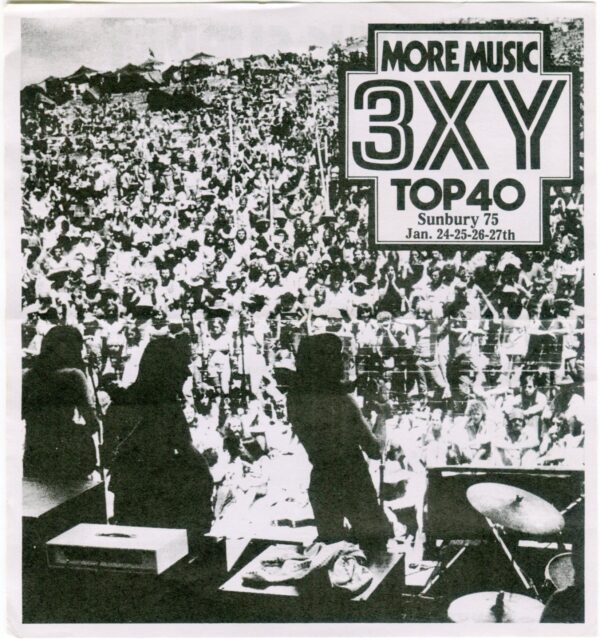
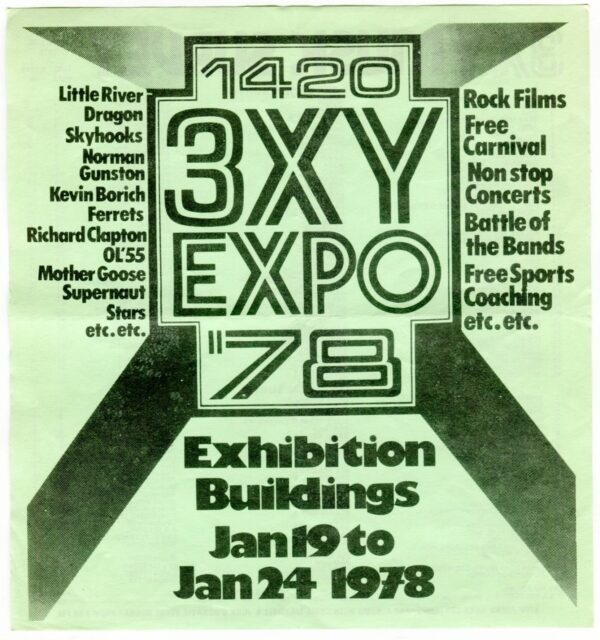
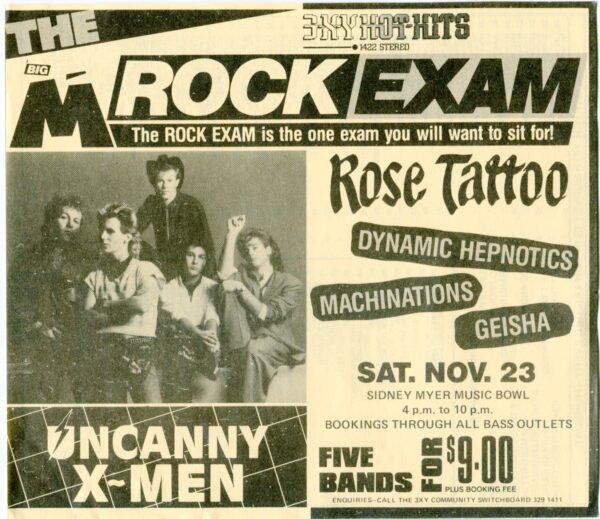
Leave a Reply